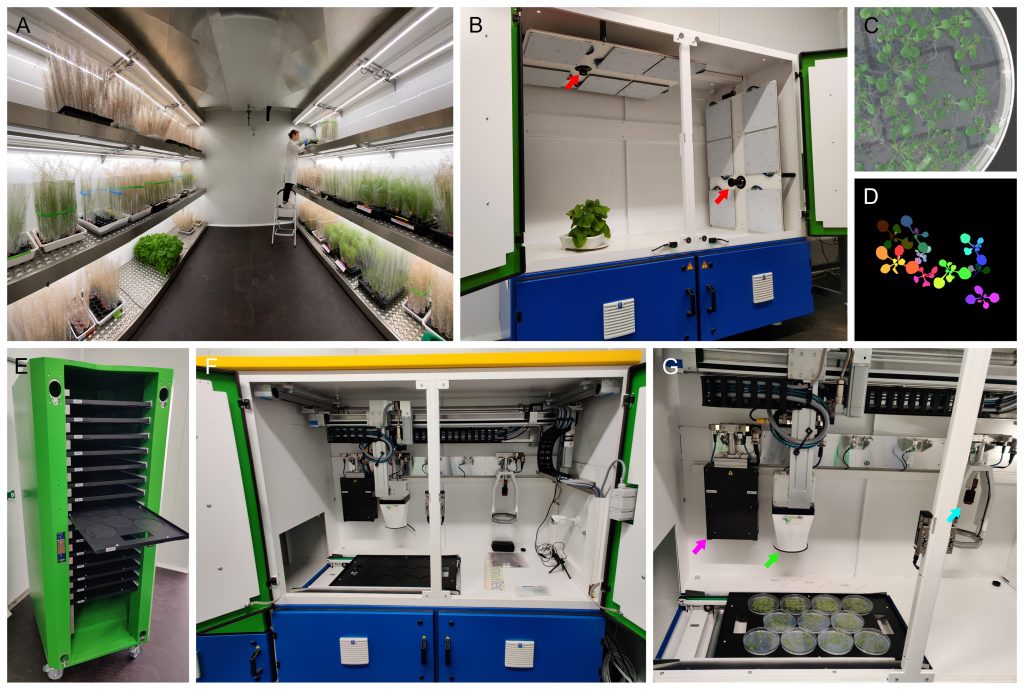There is a general consensus in the scientific literature that agriculture must substantially increase its yield to satisfy the food demand of a growing population in a sustainable manner, reducing resource consumption and environmental impact. These objectives can only be achieved through precision agriculture, which involves the robotization of some agricultural activities, and in particular, the use of electronic procedures to control plant growth. Among the latter, the digital monitoring of plant and fruit growth, and the early detection of abiotic and biotic stresses, stand out. Such monitoring can be done through phenomic analysis of cultivated plants.
We implemented a plant phenomics platform that includes two LemnaTec plant phenotyping laboratory units, which work within a walk-in climate chamber: a PhenoAIxpert Pro system, equipped with visible (RGB) and near infrared (NIR) multispectral cameras for top-down and horizontal imaging, and a HyperAIxpert multisensor system, equipped with RGB, Pulse Amplitude Modulated (PAM) fluorometry and NIR cameras, a 3D laser scanner, and a tray provider for automated sample loading. This platform has been built thanks to two grants for scientific equipment: EQC2019-006592-P, from the former Ministry of Science, Innovation and Universities, and IDIFEDER/2020/019, from the Generalitat Valenciana.
 Plant phenomics platform at IB. (A) Walk-in climate chamber of the plant phenomics platform. (B) PhenoAIxpert Pro system equipped with two RGB and NIR cameras, indicated by red arrows. (C) Top-down photograph of Arabidopsis rosettes obtained by the PhenoAIxpert system. (D) Leaf segmentation of rosettes in (C) performed by the LemnaGrid software. (E-G) HyperAIxpert system equipped with a trolley (E) and a tray provider for automated sample loading, and the HyperAIxpert processing module (F), with a closer view in (G). The processing module, which is equipped with an RGB camera, a 3D laser for 3D imaging, and a PAM fluorescence sensor, indicated by cyan, magenta and green arrows, respectively.
Plant phenomics platform at IB. (A) Walk-in climate chamber of the plant phenomics platform. (B) PhenoAIxpert Pro system equipped with two RGB and NIR cameras, indicated by red arrows. (C) Top-down photograph of Arabidopsis rosettes obtained by the PhenoAIxpert system. (D) Leaf segmentation of rosettes in (C) performed by the LemnaGrid software. (E-G) HyperAIxpert system equipped with a trolley (E) and a tray provider for automated sample loading, and the HyperAIxpert processing module (F), with a closer view in (G). The processing module, which is equipped with an RGB camera, a 3D laser for 3D imaging, and a PAM fluorescence sensor, indicated by cyan, magenta and green arrows, respectively.

